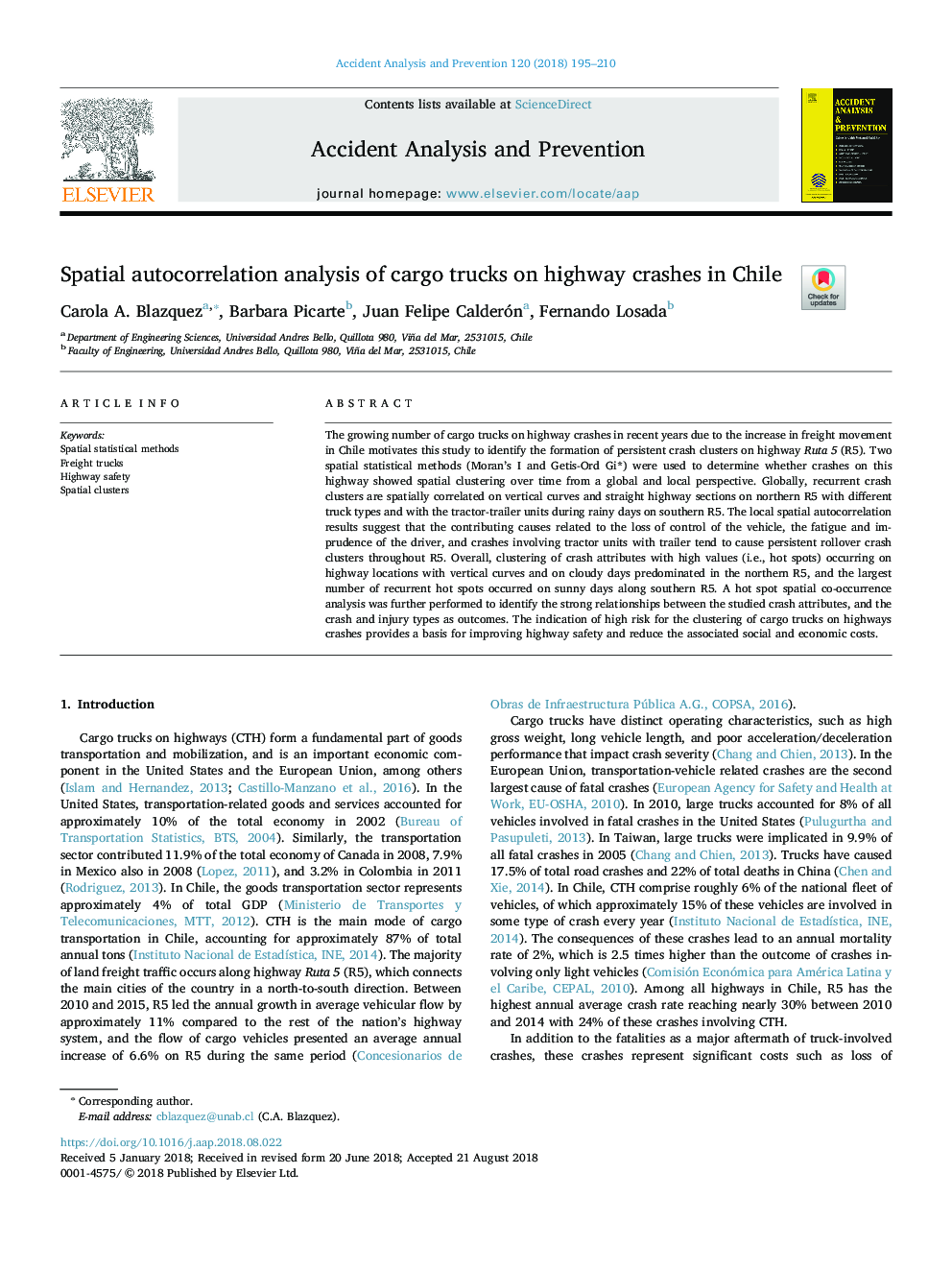| Article ID | Journal | Published Year | Pages | File Type |
|---|---|---|---|---|
| 11002989 | Accident Analysis & Prevention | 2018 | 16 Pages |
Abstract
The growing number of cargo trucks on highway crashes in recent years due to the increase in freight movement in Chile motivates this study to identify the formation of persistent crash clusters on highway Ruta 5 (R5). Two spatial statistical methods (Moran's I and Getis-Ord Gi*) were used to determine whether crashes on this highway showed spatial clustering over time from a global and local perspective. Globally, recurrent crash clusters are spatially correlated on vertical curves and straight highway sections on northern R5 with different truck types and with the tractor-trailer units during rainy days on southern R5. The local spatial autocorrelation results suggest that the contributing causes related to the loss of control of the vehicle, the fatigue and imprudence of the driver, and crashes involving tractor units with trailer tend to cause persistent rollover crash clusters throughout R5. Overall, clustering of crash attributes with high values (i.e., hot spots) occurring on highway locations with vertical curves and on cloudy days predominated in the northern R5, and the largest number of recurrent hot spots occurred on sunny days along southern R5. A hot spot spatial co-occurrence analysis was further performed to identify the strong relationships between the studied crash attributes, and the crash and injury types as outcomes. The indication of high risk for the clustering of cargo trucks on highways crashes provides a basis for improving highway safety and reduce the associated social and economic costs.
Keywords
Related Topics
Physical Sciences and Engineering
Chemical Engineering
Chemical Health and Safety
Authors
Carola A. Blazquez, Barbara Picarte, Juan Felipe Calderón, Fernando Losada,
